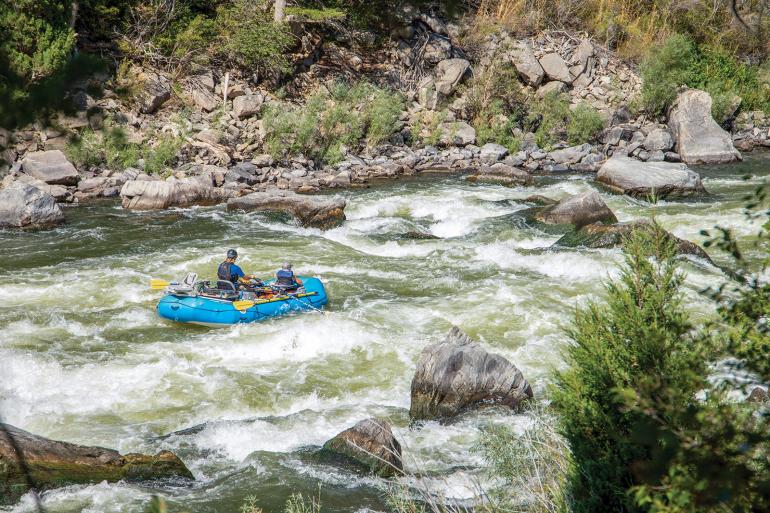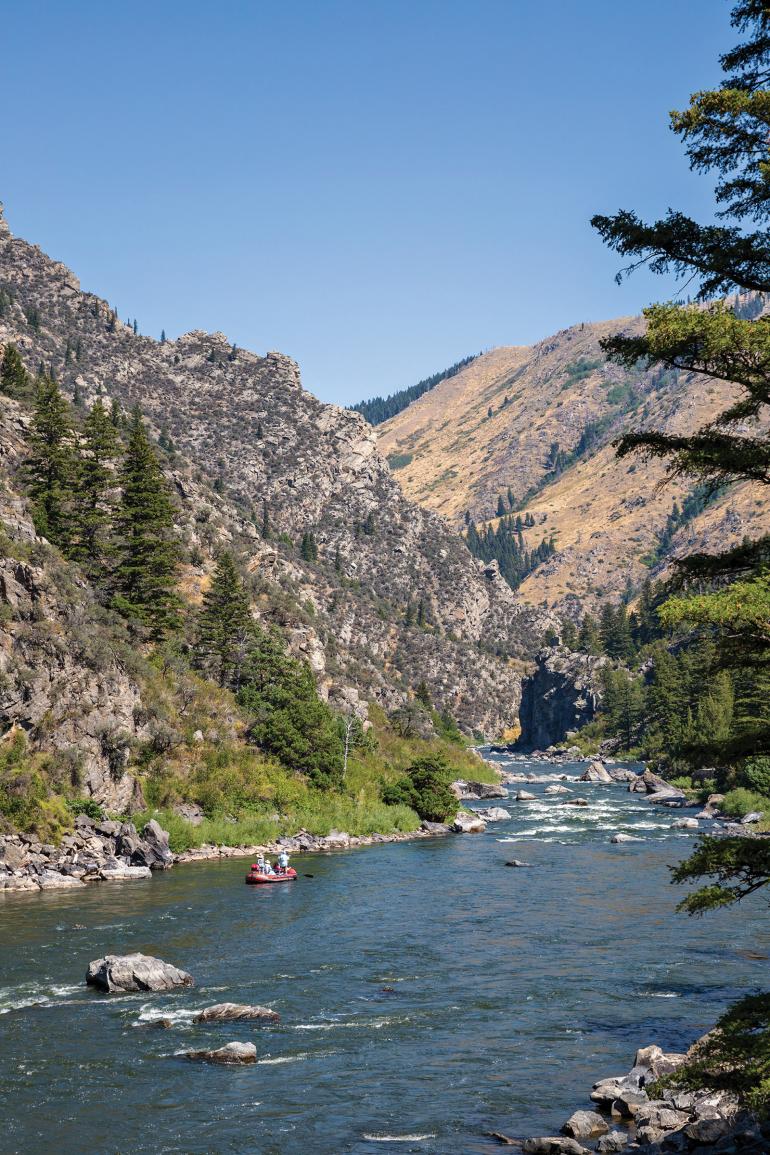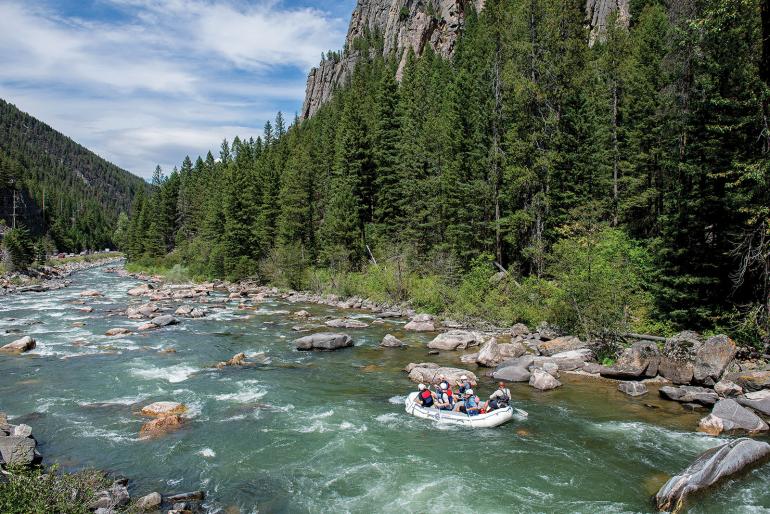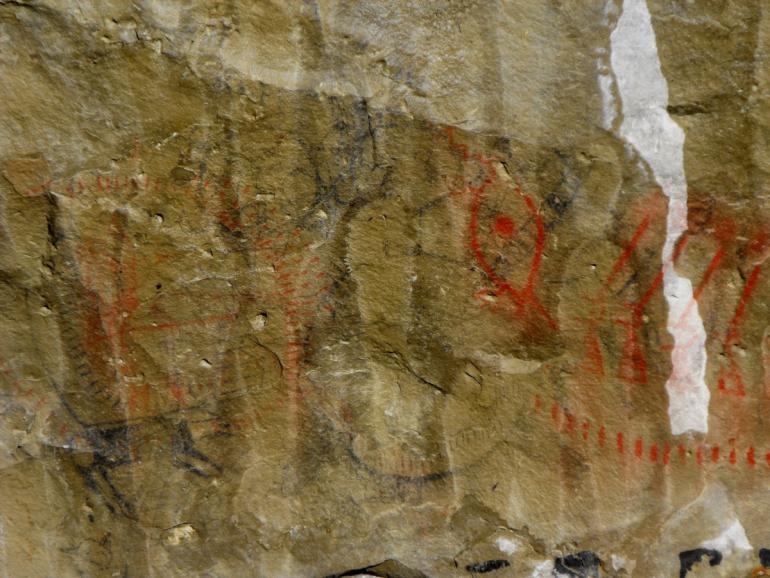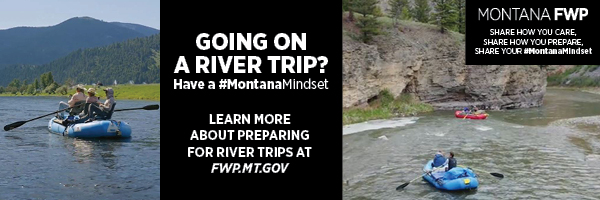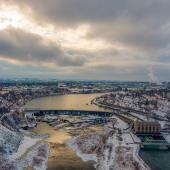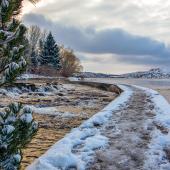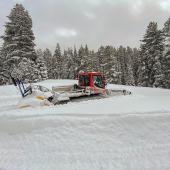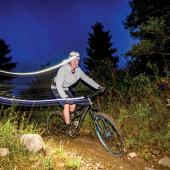Safe & Sound
Considerations for your upcoming float trip.
As you journey down one of Montana's pristine rivers, keep safety in mind, and recall that you are an important part of the collective experience of all river users. Courtesy and respect to those around you will ensure that everyone has the chance to make the memories of a lifetime.
Launching the Boat: As you embark on your river adventure, you will encounter the reality of popular river systems: boat ramps can be busy. Exercise patience, communication, and friendliness. Prepare your boat and gear away from the ramp area, and don't go to the ramp until you're ready to launch. Park politely in areas that do not damage vegetation, block other vehicles, or create safety hazards.
Navigation & Maps: Always carry appropriate maps and a compass with you, and know how to use them. Digital maps should be downloaded to your cell phone prior to a launch, as service may not be available on the river. Satellite communicators can be used for emergencies when cell-phone coverage is not available—know how and when to use them. It's a good idea to share your plan for the river trip with friends or family, and let them know when you intend to return.
Sharing the River: Communicate with others on the river if you intend to pass them, and be considerate to those who may be using the river in a different way than you, such as anglers or tubers. Minimize any loud noise or music that may disturb the peaceful surroundings, and refrain from engaging in any obnoxious or disruptive behavior that could spoil the experience for others.
Motorized Boats: In some areas, such as the Missouri and lower Yellowstone rivers, motorized watercraft can be a great way to explore. There may be seasonal boating restrictions for motorized craft, so make sure you research and understand when and where you can operate those vessels, and what speeds are permitted. When approaching or passing non-motorized boats, provide ample space and slow to no-wake speeds. Be mindful that hazards and obstacles on the river are constantly changing. Gravel and sand bars change from season to season, and can appear without warning.
Viewing Wildlife: Your journey on the river will take you through diverse ecosystems and wildlife habitat. View wildlife from a distance, and remain quiet—you are a visitor in their home.
Montana is bear country, and all bears are potentially dangerous. Carry and know how to use bear spray, which is available at many outdoor retailers and can be used to deter a charging bear. Inert practice cans of bear spray are available if you'd like to get a feel for it before you are faced with a potential survival situation. Never feed bears or other animals.
Despite the potential dangers of encountering wildlife in its natural habitat, seeing abundant wildlife is part of what makes Montana such a special place. By being responsible and respectful in our interactions with these animals, we can appreciate their beauty and grace while preserving their natural behavior and minimizing the risk to ourselves and the surrounding ecosystem.
Hiking on Public Lands: The public land surrounding many Montana rivers offers a plethora of hiking opportunities that satisfy the abilities of every visitor—from the novice hiker to the expert adventurer. When hiking, stay on established paths and follow all signage. Your respect of private property will help preserve the relationship between river enthusiasts and landowners, and will ensure access to the rivers and hiking that we all cherish.
Respecting Historical Sites: Along your hiking adventures, you will encounter cultural and historic sites. Pictographs, artifacts, and homesteads provide a unique glimpse into Montana's rich history, and are of sacred importance today. Native peoples have utilized these waterways in a manner that visitors seek today—gratitude for the natural world. Tribes continue to communicate on a deeper level, as told through ancestral practice. These traditional cultural landscapes are vital to the people who speak of origin to the Earth, and who hope through respect that visitors will feel the experience rather than touching or disturbing. It is our collective responsibility to protect our common history. Please do not touch, move, or enter any of the historic features you encounter. It is illegal to remove artifacts of any kind or damage cultural resources—no matter how small or seemingly insignificant.
Social Media: Think carefully about what you share on social media. Avoid posting exact routes or GPS coordinates to allow future visitors the opportunity for the thrill of discovery.
Fishing: Some of the best fishing in the world can be found in the Treasure State. Montanans take pride in their wild trout streams, and angling is a key tourist industry in the state. Practice good catch-and-release techniques, and observe harvest limits to preserve healthy fish populations and the angling experience for generations to come.
Leave No Trace: Pack out everything you bring on your river trip, and leave the areas you visit better than you found them. Check for micro-trash at campsites and picnic areas, and leave no trace of your visit.
Clean, Drain, Dry: When you finish your river trip, it's especially important that your watercraft and gear are cleaned, drained, and dried thoroughly. This is essential after every trip, and when moving between waters, to prevent the spread of aquatic invasive species. Non-native plants, animals, and other organisms can out-compete native species, disrupting the ecological balance and causing irreparable harm to our river habitat and ecosystems. Completely remove mud and vegetation from all equipment, including your boat's anchor, before leaving the access area. Drain all water from your boat and gear, including all internal compartments. Boots, waders, or anything else that is wet must be dried thoroughly.

